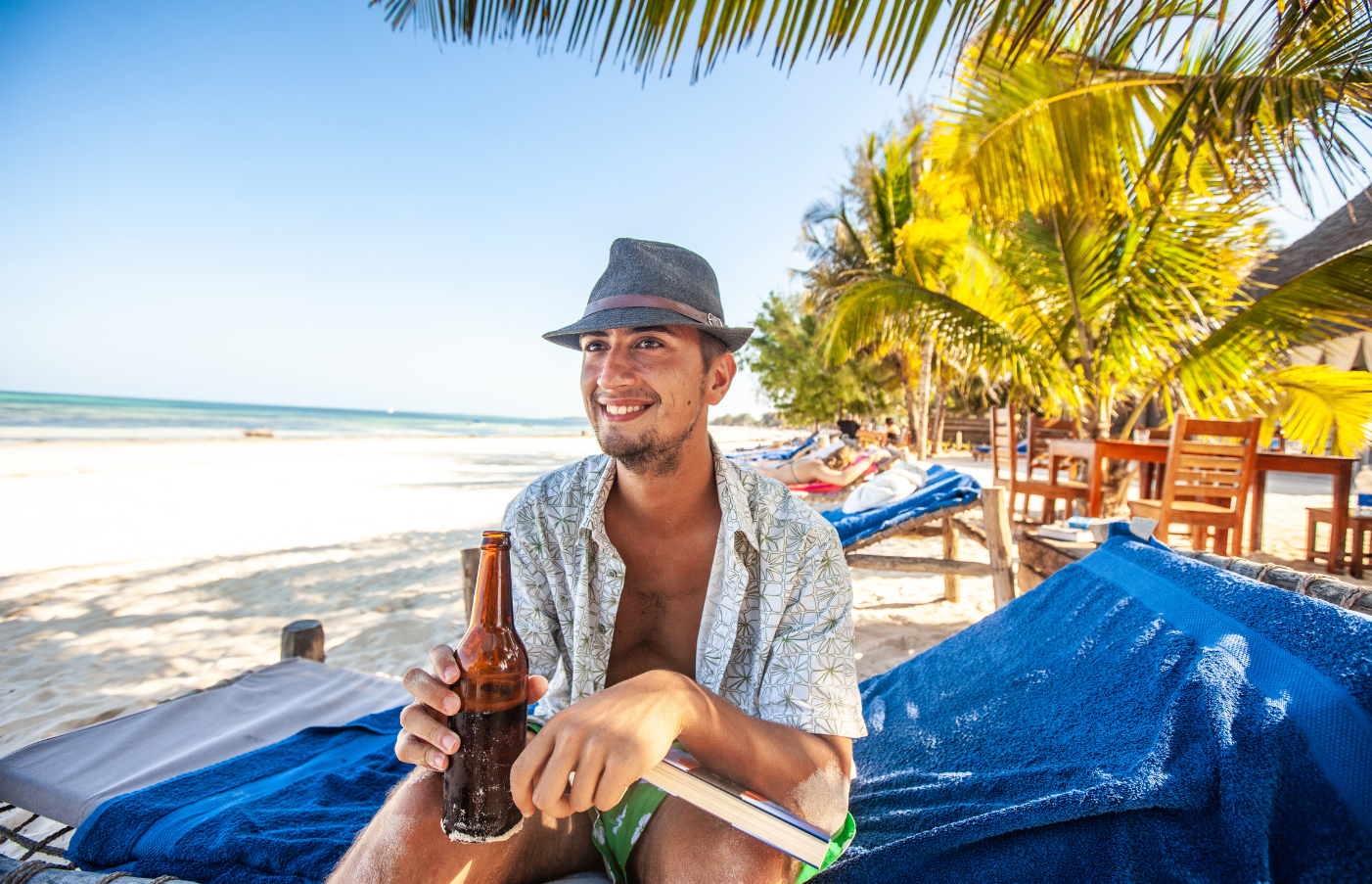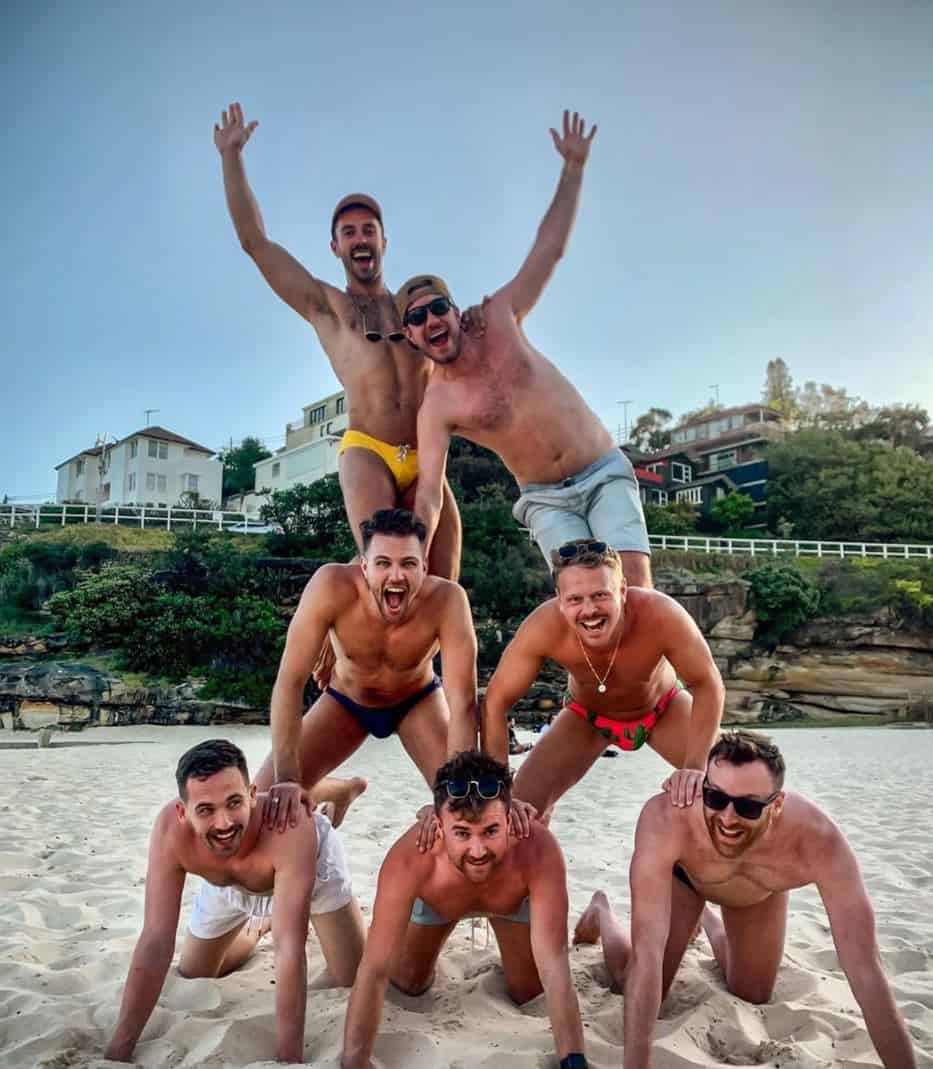
The Art of Gay Beach Cruising
Find out how to enhance your gay beach experience
Let's be honest – gay beaches aren't just about getting the perfect tan. For decades, they’ve facilitated hookups and opportunities for Voyeurism. While dating apps have changed the game, there's something timelessly thrilling about the organic, in-person art of beach cruising that no amount of digital innovation can replicate.
This guide explores the delicate dance of gay beach cruising – a practice with unwritten rules, regional variations, and a rich history within LGBTQ+ culture. Whether you're a seasoned pro or a curious newcomer, understanding this aspect of gay culture can considerably enhance your beach experience.
A Brief History: From Necessity to Tradition
Before dating apps and openly gay establishments, beaches offered rare public spaces where gay men could connect with relative safety. Secluded coves and designated sections of shoreline became known through word of mouth, creating spaces where LGBTQ+ people could be themselves.
What began as a necessity evolved into tradition, with beaches like Jacob Riis in New York, Black's Beach in San Diego, and Herring Cove in Provincetown developing decades-long reputations as cruising grounds. Even as digital options have proliferated, the sensory experience of sun, sea, and in-person chemistry keeps this tradition alive.
Reading the Beach: Subtle Signals and Regional Differences
Successful beach cruising requires understanding the invisible geography of any gay beach. Different areas often have different purposes:
The Social Zone: Usually near the entrance or where groups gather. Perfect for meeting friends-of-friends and social connections, but typically not where direct cruising happens.
The Display Runway: That stretch of sand where everyone seems to take walks, often unnaturally slowly. This parade ground is where initial eye contact happens, setting up potential interactions.
The Fringe Areas: Typically farther from the main crowd, sometimes near dunes, rocks, or vegetation. The unspoken understanding is that those venturing to these areas may be looking for more immediate connections.
Regional differences abound. European gay beaches tend to be more straightforward, with cruising happening more openly. North American beaches often involve more coded behaviors and signals. Australian beaches frequently blend cruising with genuine athletic activity (that beach volleyball game is serving multiple purposes).
The Universal Language of Interest
While specifics vary by culture and location, some signals transcend boundaries:
Sustained Eye Contact: The foundation of beach communication. A quick glance could be accidental; a returned gaze held for three seconds or more rarely is.
The Strategic Towel Placement: Setting up your beach spot near someone despite ample empty space elsewhere is universally understood as interest.
The "Accidental" Proximity: Finding reasons to be near your interest – asking for sunscreen, commenting on their book (“ooh, Margaret Atwood, slay”), or the classic "do you know what time it is?" when you definitely have a phone with the time.
The Cooling-Off Walk: Taking a slow stroll toward the water, especially if timed to coincide with someone else's movement, creates natural conversation opportunities.
Beach Cruising Etiquette: The Unwritten Rules
Like any cultural practice, beach cruising has evolved its own etiquette. Following these unspoken rules keeps the experience positive for everyone:
Respect Clear Disinterest: Not everyone at a gay beach is there to cruise. A polite decline or averted gaze means move on immediately – no exceptions.
Maintain Public Discretion: While connections may start at the beach, anything beyond flirtation belongs elsewhere. Respect for public boundaries preserves these spaces for everyone.
No Photos Without Consent: This should be obvious, but it bears repeating. Many beachgoers value privacy and discretion. Keep your selfies to yourself.
Substance Awareness: While beach drinks are common, clear-headed interaction ensures everyone can provide genuine consent.
Environmental Respect: Leave no trace applies to all activities. The beach isn't just a cruising ground – it's a natural environment deserving protection.
Digital vs. Analog: When Worlds Collide
The modern gay beach exists in a fascinating hybrid state where traditional cruising coexists with digital alternatives. It's now common to see someone on Grindr while physically at a gay beach, potentially messaging someone just down the shore!
This digital overlay has created interesting new dynamics:
- Using apps to break the ice with someone you've noticed in person
- The awkward moment of recognizing someone from their distinctive tattoo or swimwear that was visible in their profile pic
- The paradoxical situation of feeling too shy for in-person interaction but bold enough for explicit digital communication.
Some traditionalists lament this change, while others embrace the expanded options. The reality is that both approaches now complement each other, creating more opportunities for connection and cawck.
Beach-Specific Approaches Around the World
Cruising customs vary significantly by location. Here's a glimpse at how things work at some famous gay beaches:
Sitges, Spain: Cruising happens right on the main gay beach (Playa de la Bassa Rodona) in broad daylight with minimal pretense. The nearby beach of Playa del Muerto offers more secluded options.
Fire Island Pines, USA: The cruising happens less on the beach itself and more in the famous wooded area between the Pines and Cherry Grove aptly named "the Meat Rack."
Farme de Amoedo, Rio de Janeiro: Beach cruising has a theatrical quality here, with displaying your assets through microscopic swimwear being half the fun.
North Bondi, Sydney: Cruising intertwines with fitness culture, where showing off athletic prowess becomes part of the attraction ritual.
Elia Beach, Mykonos: The far right end of this beach becomes progressively more cruisy, with international visitors creating a particularly diverse scene.
Safety Considerations: Cruising Smartly
While beach cruising can be fun, safety remains paramount:
Trust Your Instincts: If something feels off, it probably is. There's never any obligation to continue an interaction.
Friend Awareness: Let someone know your whereabouts, especially if heading to more secluded areas.
Bring Protection: Always be prepared for where the day might lead so bring suncream, condoms and prep.
Local Knowledge: Understanding local laws and customs prevents uncomfortable situations, especially when traveling internationally.
The Future of Gay Beach Cruising
As society continues evolving, gay beach cruising adapts while maintaining its essential appeal. Today's beaches often feature a more diverse LGBTQ+ crowd than the historically male-dominated scenes, creating new dynamics and traditions.
What remains unchanged is the fundamental human desire for connection and the special alchemy that happens when attraction, sun, sea, and freedom combine. In a world of increasing digital mediation, the directly physical, sensory experience of beach cruising retains a primal appeal that will likely ensure its continuation.


